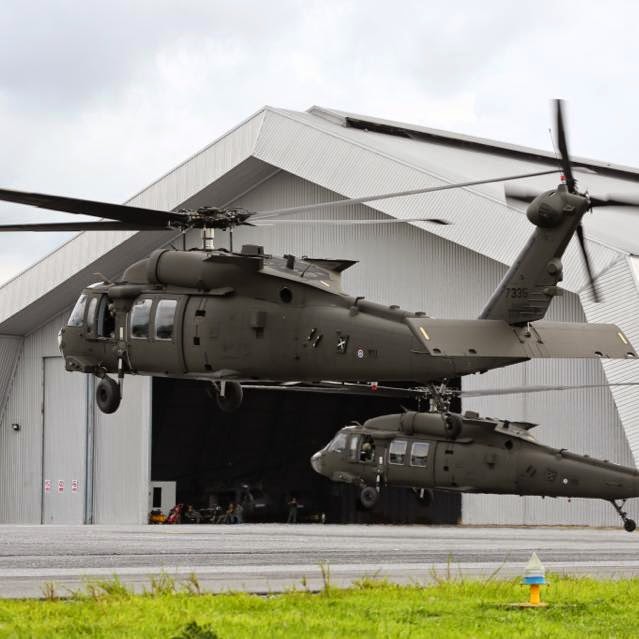Navigating Uh 60 Helicopter Regulations and Conformity Needs

Regulatory Framework Overview
The governing structure controling UH-60 helicopter operations encompasses a complicated collection of criteria and rules established by aeronautics authorities. These guidelines are developed to ensure the secure and reliable procedure of UH-60 helicopters in different environments. The Federal Air Travel Administration (FAA) plays a main role in developing and implementing these policies, which cover a large range of operational aspects, consisting of airworthiness criteria, pilot certifications, maintenance needs, and operational treatments.
Compliance with these laws is necessary for helicopter operators to keep the highest degree of safety and functional integrity. Failing to follow these guidelines can result in severe consequences, consisting of accidents, injuries, and regulative sanctions. Helicopter operators need to remain informed regarding the most recent regulatory advancements and ensure that their operations are in complete conformity with all applicable policies and criteria.
Airworthiness Directives and Assessments
Amidst the regulatory framework governing UH-60 helicopter operations, an important emphasis rests on conformity with Airworthiness Directives and carrying out detailed examinations to promote safety criteria and functional integrity. Airworthiness Instructions (Advertisements) are provided by air travel authorities to deal with risky conditions in aircraft, consisting of the UH-60 helicopter, and mandate certain actions to be taken by operators or proprietors. Compliance with ADs is obligatory, and failure to abide by these regulations can cause severe repercussions, including grounding of the airplane.
Normal assessments are vital to guaranteeing the airworthiness of UH-60 helicopters. These inspections incorporate a variety of checks, from routine day-to-day inspections performed by pilots before and after flights to extra detailed scheduled upkeep evaluations performed by licensed auto mechanics. Additionally, unique assessments may be needed based upon particular conditions or occurrences. By sticking to a rigorous inspection routine, drivers can spot and deal with potential problems quickly, therefore enhancing the safety and security and dependability of UH-60 helicopter procedures.
Pilot Qualifications and Training

Pilot training for UH-60 helicopters is comprehensive and covers a large have a peek at this website range of subjects, including airplane systems, emergency procedures, navigating, and mission-specific training. Furthermore, pilots undertake simulator training Discover More to practice numerous emergency circumstances in a controlled setting. This training helps pilots establish the necessary skills to take care of challenging scenarios effectively.


Furthermore, ongoing training and specialist growth are necessary for UH-60 pilots to remain current with the current regulations, modern technology, and ideal methods. By purchasing pilot credentials and training, drivers can improve safety, optimize efficiency, and guarantee compliance with governing demands in the operation of UH-60 helicopters.
Functional Limitations and Demands
Pilot qualifications and training function as the foundation for understanding the functional restrictions and requirements linked with UH-60 helicopter operations (uh 60). These functional limitations are established to guarantee the safety and security of the team, passengers, and the airplane itself. Operational constraints may include variables such as climate condition, weight limitations, elevation restrictions, and functional limits. It is crucial for pilots to be skilled in these limitations to make educated decisions throughout flight operations. In addition, compliance needs, such as adhering to certain trip paths, interaction protocols, and emergency treatments, are important for keeping operational security and governing compliance. Pilots need to remain current with all functional constraints and requirements with normal training, briefings, and evaluates to minimize risks and make sure special info effective and secure UH-60 helicopter procedures. By prioritizing adherence to these operational guidelines, pilots can improve the total safety and effectiveness of their objectives while promoting regulatory standards.
Emergency Procedures and Compliance Screening
Reliable emergency treatments and thorough conformity screening are essential parts of preserving operational safety and regulatory adherence in UH-60 helicopter procedures. Emergency situation procedures encompass methods for different situations, including engine failings, fires, hydraulic problems, and a lot more. Pilots and crew participants must be skilled in these treatments to respond promptly and properly in emergency situations. Routine conformity screening makes certain that the helicopter satisfies all regulatory needs set forth by aviation authorities. This screening includes comprehensive inspections, checks, and analyses to verify that the airplane is airworthy and in compliance with all applicable regulations.
In addition, compliance testing may involve simulations of emergency situations to examine the staff's feedback and the helicopter's efficiency under stress. By prioritizing emergency situation treatments and conformity screening, UH-60 drivers can alleviate dangers and show their dedication to safety and security and governing conformity.
Final Thought
Finally, adherence to governing framework, compliance with airworthiness directives, pilot qualifications and training, operational limitations, and emergency situation treatments are essential for browsing the laws and needs of running a UH-60 helicopter. uh 60. It is critical for drivers to focus on safety and security and make certain complete conformity with all applicable policies to keep the airworthiness and operational integrity of the aircraft
Navigating the regulative landscape surrounding UH-60 helicopter operations demands a nuanced understanding of the intricate internet of policies and compliance requirements.Conformity with these guidelines is necessary for helicopter operators to maintain the highest possible degrees of security and functional integrity.Amidst the governing framework governing UH-60 helicopter procedures, an important focus lies on conformity with Airworthiness Directives and conducting comprehensive inspections to maintain security criteria and operational dependability.Reliable emergency treatments and comprehensive conformity testing are critical parts of maintaining functional safety and governing adherence in UH-60 helicopter operations. Normal compliance testing makes sure that the helicopter meets all governing demands established forth by air travel authorities.